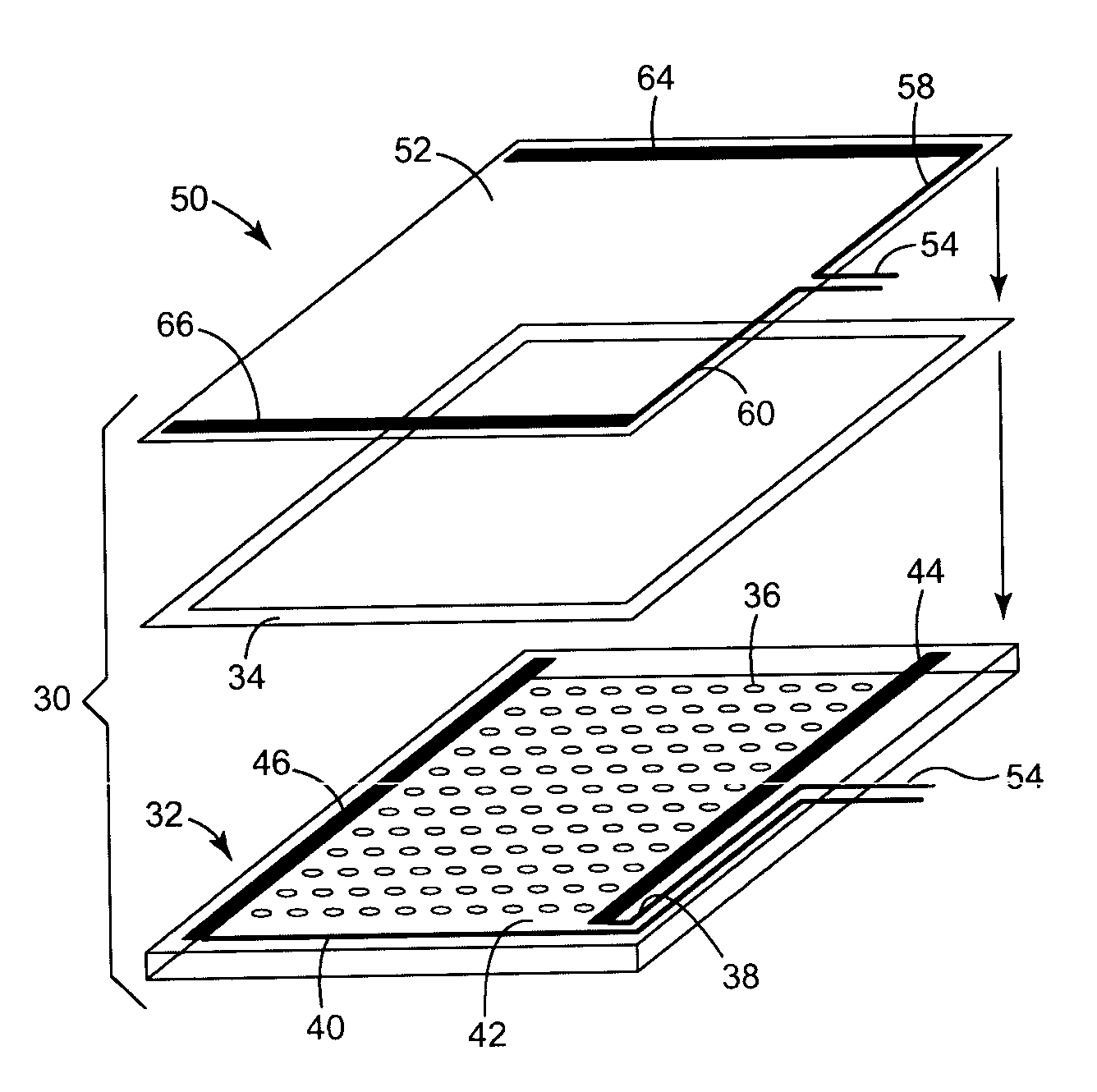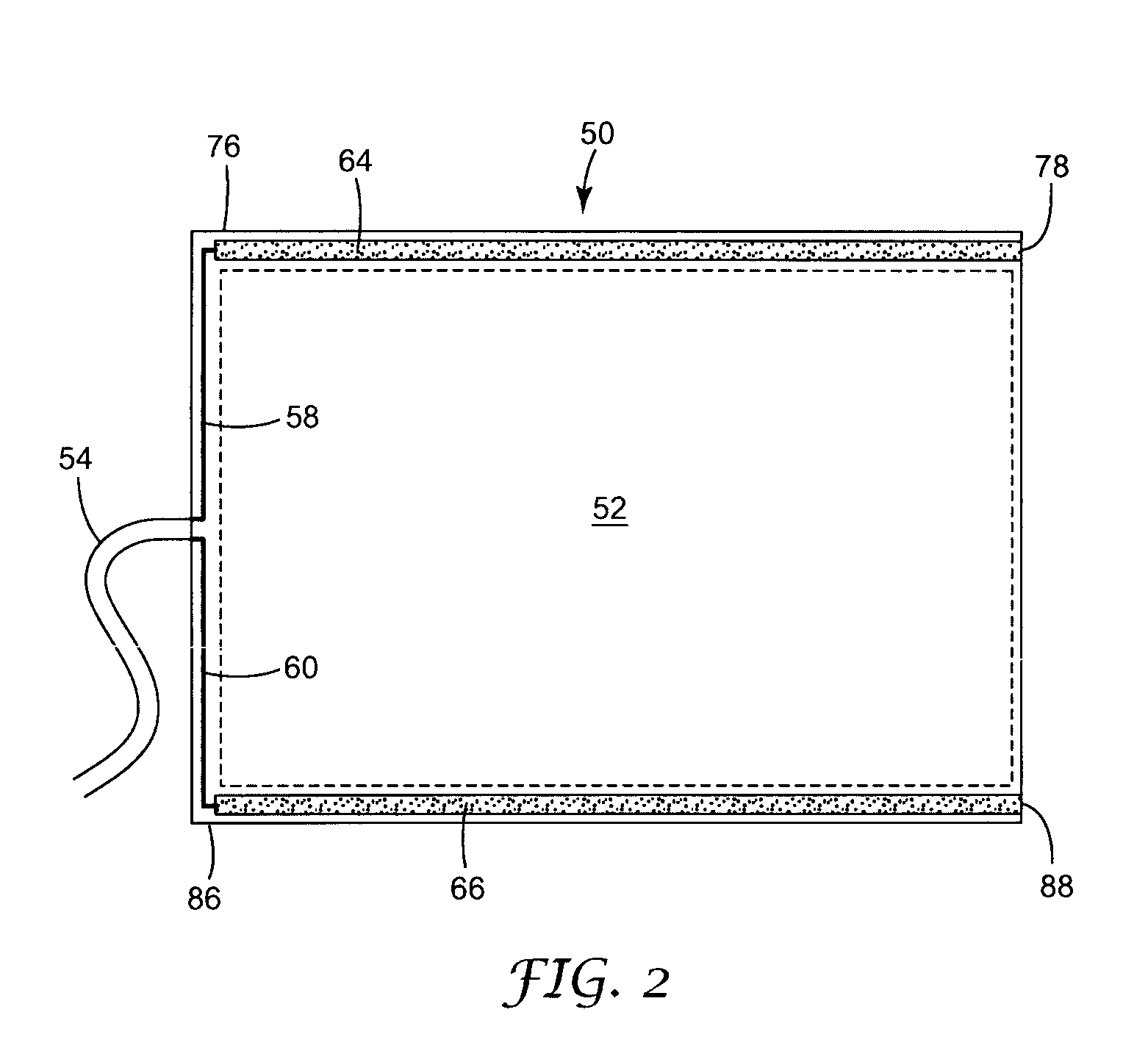Resistive touch screen incorporating conductive polymer
a technology of resistive touch screen and conductive polymer, which is applied in the direction of chemical indicators, instruments, chemical methods analysis, etc., can solve the problems of tao and zno not being as widely available on polyethylene terephthalate sheets, the discontinuity of film and film durability may arise, and the inability to achieve the same optical efficiency of the same sheet resistan
- Summary
- Abstract
- Description
- Claims
- Application Information
AI Technical Summary
Benefits of technology
Problems solved by technology
Method used
Image
Examples
example 2
5-wire devices were made using conducting polymer as both conductive layers. This example demonstrates the improvement in durability obtained by using conducting polymer as both conductive layers.
The experiment described in Comparative Example 1 was repeated, except that the 5-wire devices were fabricated using EL1500 as both the substrate and top conductive layers. The electrodes, interconnects and linearization pattern were screen printed onto the EL1500 using a silver ink available from DuPont under the trade designation 5089. The silver ink was cured at 130° C. for 6 minutes. The sensors were linear and accurate when operated with the 3M Touch Systems, Inc. SMT3 controller. Each of seven 5-wire sensors constructed was tap tested in three positions. The lifetime of the sensors ranged from 128,000 taps to 766,000 taps.
example 3
4-wire touch sensors were made with conducting polymer as both conductive layers. This example demonstrates linear 4-wire sensors made with conducting polymer.
3 inch by 3 inch 4-wire touch sensors were fabricated by printing the DuPont 5089 silver ink onto EL1500 and curing as described in Example 2. Devices were assembled with the conductive sides facing but separated by a 0.003 inch thick frame of double sided tape positioned around the perimeter, which functioned as a spacer. A small piece of conductive tape available from Chromerics was attached to each of the four silver electrodes, and a wire was soldered onto each electrode using this tape and connected to the 3M Touch Systems, Inc. SC4 controller. The sensors functioned well, accurately detecting the location of touches and linear lines were drawn.
A stylus rub durability test was run on several sensors that were constructed according to this Example 3. A 0.8 mm radius PDA-type stylus weighted to apply 250 g was rubbed i...
example 4
Contrast ratio of PEDOT was compared to that of ITO. This example illustrates the optical advantages of conducting polymer compared to ITO.
Conducting polymer films having a range of sheet resistances were obtained from Agfa-Gavaert Corp. Contrast ratio, defined as total transmission divided by total reflectance, along with color shift of the films were compared to standard ITO. The PEDOT material, with much lower reflectance, gave a much higher contrast ratio than ITO. In addition, the PEDOT provided a blue color shift, which is much preferred for a display over the yellow shift given by ITO.
PUM
 Login to View More
Login to View More Abstract
Description
Claims
Application Information
 Login to View More
Login to View More - R&D
- Intellectual Property
- Life Sciences
- Materials
- Tech Scout
- Unparalleled Data Quality
- Higher Quality Content
- 60% Fewer Hallucinations
Browse by: Latest US Patents, China's latest patents, Technical Efficacy Thesaurus, Application Domain, Technology Topic, Popular Technical Reports.
© 2025 PatSnap. All rights reserved.Legal|Privacy policy|Modern Slavery Act Transparency Statement|Sitemap|About US| Contact US: help@patsnap.com



